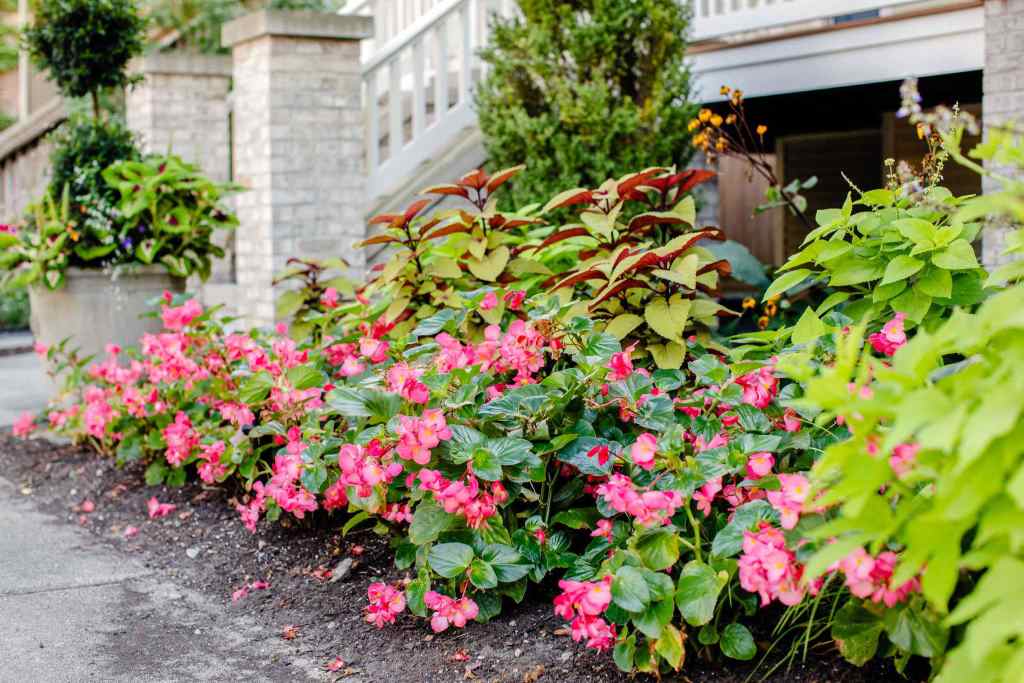
Gardening in shady areas can be a challenge, but it doesn’t mean you have to sacrifice vibrant blooms. Many stunning flowering vines for shade thrive in low-light conditions, adding vertical interest and pops of color to your garden’s nooks and crannies.
Here are 10 of the best shade-loving flowering vines to elevate your landscape:
1. Climbing Hydrangea (Hydrangea anomala petiolaris):

This deciduous vine is a showstopper with its large, lacecap-like white blooms that appear in early summer. Its heart-shaped leaves turn a beautiful golden hue in autumn. Climbing hydrangea attaches itself to surfaces with aerial roots, making it ideal for walls, fences, or arbors.
2. Clematis (Clematis spp.):
With hundreds of clematis varieties, you’re sure to find one that suits your style. Many clematis cultivars thrive in partial shade, producing an array of colors and flower shapes throughout the growing season. Choose from large-flowered hybrids, dainty bell-shaped blooms, or fragrant varieties for a sensory delight.
3. Japanese Hydrangea Vine (Schizophragma hydrangeoides):
Similar in appearance to climbing hydrangea, this vine features flat-headed clusters of white flowers with showy sepals. Its foliage is dense and textured, adding interest even when not in bloom. Japanese hydrangea vine is a slower grower, making it more manageable for smaller spaces. Additionally, majestic bird of paradise can thrive indoors, complementing its appeal as a versatile ornamental plant.
4. Honeysuckle (Lonicera spp.):
Honeysuckles are beloved for their sweetly scented, tubular flowers that attract hummingbirds and butterflies. Many varieties thrive in partial to full shade, such as the coral honeysuckle (Lonicera sempervirens) with its vibrant red-orange blooms or the fragrant Hall’s honeysuckle (Lonicera japonica ‘Halliana’).
5. Star Jasmine (Trachelospermum jasminoides):
This evergreen vine is highly prized for its fragrant, star-shaped white flowers that bloom profusely in spring and early summer. Star jasmine’s glossy foliage provides year-round interest, making it a popular choice for covering walls, trellises, and fences.
6. Bleeding Heart Vine (Dicentra scandens):

This delicate vine features heart-shaped, yellow flowers with protruding pink centers. It blooms in late spring and early summer and prefers dappled shade. Bleeding heart vine is a charming addition to cottage gardens or woodland landscapes.
7. Chocolate Vine (Akebia quinata):
Chocolate vine is named for its sweet, chocolate-like fragrance that fills the air in spring. Its five-lobed leaves and clusters of reddish-purple flowers add an exotic touch to shady gardens. Chocolate vine is a vigorous grower, so be sure to give it ample space to climb.
8. Dutchman’s Pipe (Aristolochia macrophylla):
This unusual vine is known for its large, heart-shaped leaves and intriguing pipe-shaped flowers that attract pollinators. Dutchman’s pipe prefers partial shade and moist, well-draining soil. It’s a conversation starter in any garden.
9. Passionflower (Passiflora spp.):
Passionflowers are truly unique with their intricate, exotic-looking flowers that come in a wide range of colors. Many passionflower species tolerate partial shade, such as the blue passionflower (Passiflora caerulea) or the red passionflower (Passiflora coccinea).
10. Trumpet Vine (Campsis radicans):
This vigorous vine is a hummingbird magnet, thanks to its large, trumpet-shaped flowers that appear in shades of red, orange, or yellow. Trumpet vine prefers full sun but can tolerate some shade, especially in warmer climates.
Tips for Growing Flowering Vines in Shade
- Choose the right vine for your light conditions: While these vines tolerate shade, some may bloom less profusely in deeper shade. Research the specific light requirements of each variety before planting.
- Provide sturdy support: Vines need a structure to climb, such as a trellis, arbor, or fence. Ensure the support is strong enough to withstand the weight of the mature vine.
- Amend the soil: Most flowering vines prefer rich, well-draining soil. Incorporate organic matter like compost or leaf mold to improve soil fertility and drainage.
- Water regularly: Keep the soil consistently moist, especially during the growing season. Mulching around the base of the vine can help retain moisture and suppress weeds.
With proper care, these shade-loving flowering vines can transform your shady garden into a vibrant, colorful oasis.
I hope this article helps you choose the perfect flowering vines for your shady spots!





